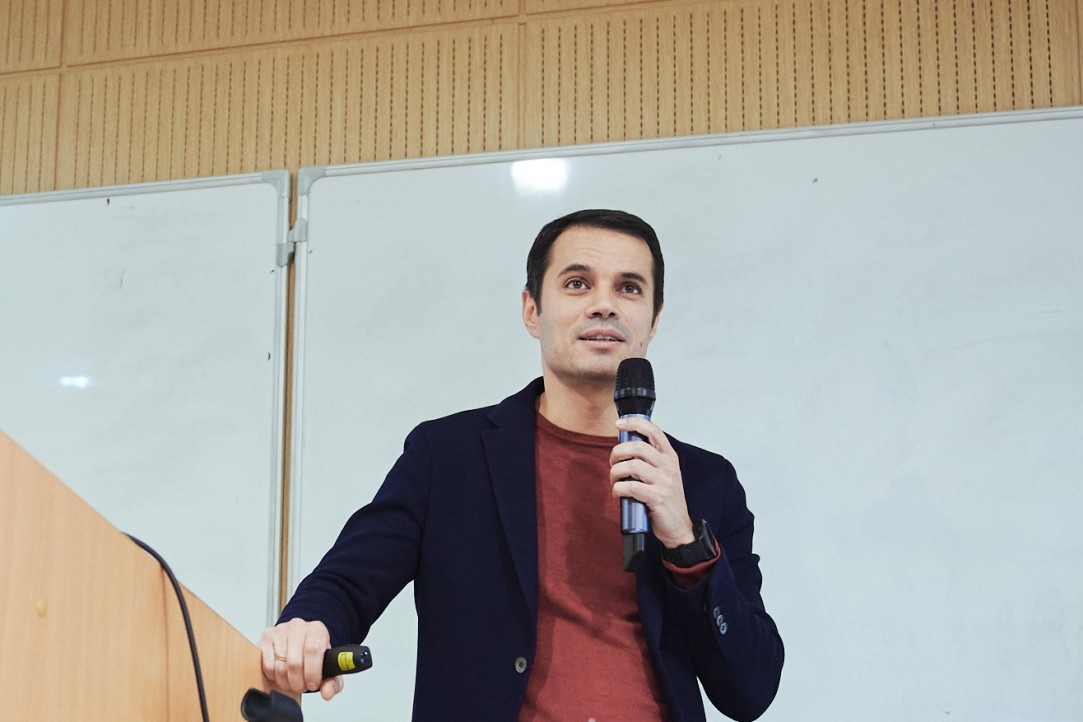Hackers, models, greenhouse gases: What risk management in banking prioritizes first

As companies grow, the range of risks they face tends to get inevitably more diverse and extensive. Risk management is out there to anticipate and adapt to the emerging risks, and to turn strategies into performance. How does risk management work in banking industry? What new challenges do companies face in the era of fintech? Dzhangir Dzhangirov, senior vice president and head of the Risks Unit at Sber, answers these questions in a lecture he gave to the students of HSE International College of Economics and Finance.
“Managing today for a better tomorrow” is how Dzhangir Dzhangirov defines the core value of his work, noting that risk management has its focus not only on metrics but also on making future development more sustainable and predictable. Risk management is about helping companies to achieve their strategic goals while reducing their anticipated and unforeseen losses, stressed Dzhangir.
Corporate risk management is a four-stage process, involving risk identification, assessment, response, and monitoring. Each stage uses its own specific practices and procedures.
Dzhangir focused his talk on identification – the strategically important stage that involves risk classification and that tends to become increasingly complex with years. For this reason, risk map review is a regular process at Sber.
By reviewing key risks to the global economy, the local businesses and economies are able to set benchmarks. For example, in 2021, based on the results of the global risks study, the top five global challenges were revised by The World Economic Forum (WEF) to include climate risks, while earlier in 2010 the main focus was on economic risks.
In his talk, Dzhangir highlighted some of the current risks that Sber faces. The first to mention is technological risk: direct and indirect losses can be incurred due to reasons such as contractor performance failure, incorrect performance/algorithm settings, unavailability of IT systems, among others.

Another serious source of risk is cyber-attacks. Cybercrimes are responsible for roughly 1% underperformance in global GDP every year. Therefore, significant efforts are being pursued by Sber to protect its systems, networks, and software from digital attacks.
One more important challenge to be considered by Sber is model risk, defined as leading to adverse outcomes for the firm due to incorrect use of models or their failure to perform adequately. Since corporate decision-making increasingly relies on models and algorithms in the first place, it is important that model risk is treated as a matter of higher significance.
Placed fourth in Dzhangir’s rating are ESG risks (E for Environmental, i.e. risk of negative environmental impact; S for Social, i.e. risk of negative impact on society, occupational safety violation, discrimination and infringement of rights; G for Governance, i.e. risks associated with ethically unacceptable corporate governance practices such as tax evasion, corruption, negligence of business ethics).
The first to lay the foundation of ESG principles, in 2004, was Kofi Annan (Editor’s note: Kofi Annan served as Secretary-General of the United Nations from 1997 to 2006). As a set of benchmarks, ESG has been embedded into corporate decision-making due to the climate agenda and other reasons. According to Dzhangir, Sber is working actively to promote the ESG agenda in Russia.
New challenges arise for businesses all the time and can be caused by various reasons. However, even when the rules are changing rapidly and turbulence occurs, it is crucial not to succumb to anxiety. The strategy of staying rational and technocratic should be followed instead. Dzhangir is convinced that by assessing their risks adequately and more correctly, companies can improve their contingency preparedness and be able to quickly find a way out.
By Evgenia Romadanova, Research Intern at HSE Economic Journalism Laboratory
Evgenia Romadanova